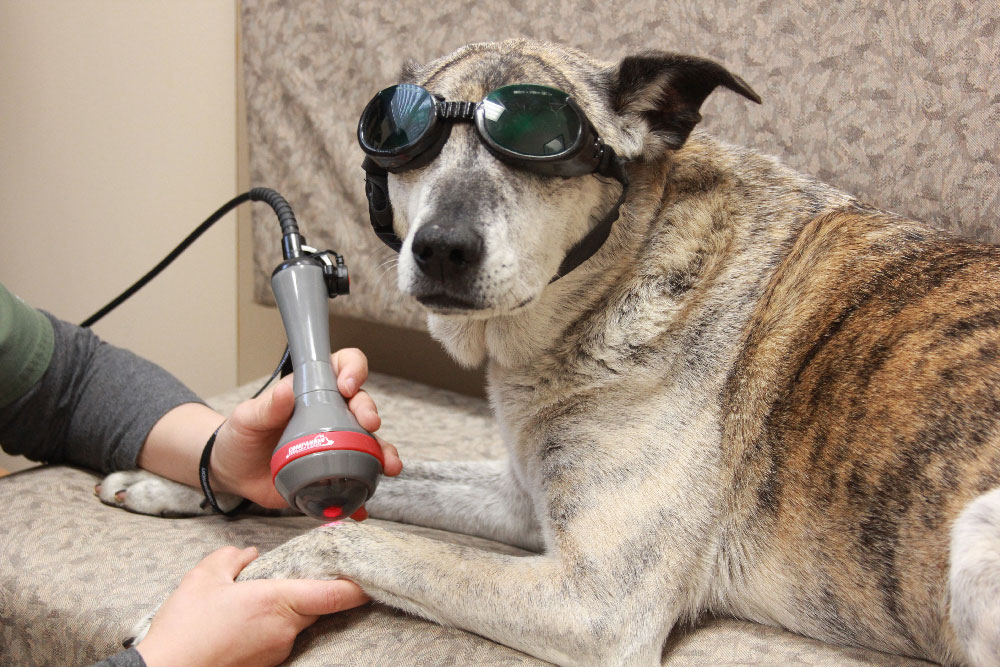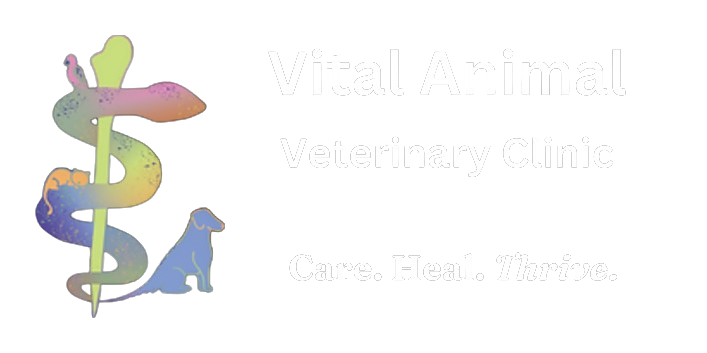What is a therapy laser?
A therapy laser is a device that provides non-ionizing light that can use the body’s own light receptors to make changes within cells. It provides a form of energy to the cell via these “light absorbing” receptors, leading to many changes at the whole body and cellular level. A therapy laser provides this treatment at varying wavelengths and power, which, when applied correctly, can treat a wide variety of ailments.
How does a therapy laser work?
Numerous studies demonstrate many benefits of therapeutic laser treatment (see links below for more information). Laser therapy can benefit numerous conditions from nerve signaling to reduced inflammation and increased cellular energy and blood flow for healing.

Nerve signaling
Nerves carry signals throughout the body – pain, pleasure, movement – all the things your pet’s body does is controlled by nerves. Nociceptors are pain-transmission nerves that run from the outer body, up to the spinal cord, and then to the brain. Each of these segments – the outer body, spinal cord, and brain – provide a location where pain can be controlled. Many of our medical therapies (pain-relief medications) target specific interfaces between these segments. However, most medications are non-specific, meaning they affect the whole body instead of only the segments that are experiencing pain.
Laser therapy can reduce the transmission of pain at any location applied; this means that only the treated areas are targeted, and the rest of the body is not affected. Therapeutic laser also allows for the treatment of all three pain-sensing segments, making it a more complete pain-relieving strategy than many medications
Cellular energy
Cells use energy to transmit pain signals, as well as to heal and protect the body. When healing occurs, cells use vast amounts of energy to grow new cells, repair damaged tissues, and provide protection to the body while injuries are repaired. The laser provides energy to cells and changes the way energy is used, making healing more effective and less painful.
Genetic component
Laser therapy also changes the genetic expression of pain modulators. This means that there are both temporary and permanent changes in the body’s methods of healing. Faster healing, less inflammation, and increased pain relief are all re-encoded in the areas treated with therapeutic lasers. Your pet will heal faster, with less pain, and have reduced chances of chronic pain – all with a quick, non-invasive treatment.
Tolerance to therapy
Unlike many pain-relieving medications, pets do not develop a tolerance to therapeutic laser treatment. No higher doses are needed – once we find a treatment plan that works, it continues to work and we continue to see benefits time after time. Rapid, non-invasive ,intensive pain relief is only a laser burst away.
What can cold laser therapy treat?
Laser therapy can be used to treat many conditions:
· Arthritis
· Tendon/Ligament injuries
· Wounds
· Post-surgery
· Post-dental
· Ear infection
· Hot spots
· Spinal injuries
· Broken toenails
· Dental disease
· Cognitive dysfunction
· Epilepsy
Laser therapy and Canine Cognitive Dysfunction
Many older pets experience cognitive decline or dysfunction, characterized by restlessness, decreased appetite, night terrors, whining, crying, and confusion. Laser therapy has been shown in humans to reduce abnormal brain waves and return normal patterns to brain function. This leads to a decrease in confusion, better sleep, and improved appetite. Visit your veterinarian for more information and to help your pet thrive in her older years.
Articles and References
- Mitochondrial dysfunction and Parkinson's disease—Near-infrared photobiomodulation as a potential therapeutic strategy
- Transcranial near-infrared light in treatment of neurodegenerative diseases
- Low-level laser therapy of pain: clinical applications
- Photobiomodulation therapy for wound care: a potent, noninvasive, photoceutical approach
- Systematic review of orthodontic treatment management with photobiomodulation therapy
BUSINESS HOURS
Monday - Friday: 8:00 - 5:00PM
Address: 2809 South Spring Ave Sioux Falls, SD 57105


